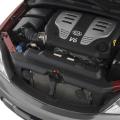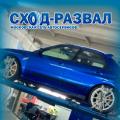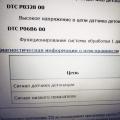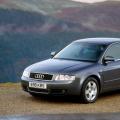And the transmission, thus transferring torque to the wheels or stopping transmission. In a car with a mechanical one, always when starting to move, during and during braking, it is necessary to manually engage or disengage the clutch, that is, connect or disconnect the crankshaft and the transmission.
Clutch disc
The work of the disks consists in friction between them, and each of them is located on its own shaft. This is due to the uneven surface of each disc. Thus, there is a clutch pressure plate (connected to the engine) and a clutch driven plate (connected to the transmission).
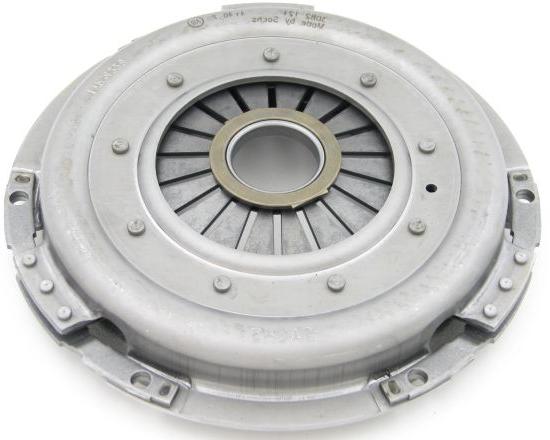
How does a clutch disc work?
With a smooth start, under the influence of springs, the pressure plate is rubbed against the driven one. The car starts to move when both of these discs are worn down, that is, they come into contact and begin to rotate in the same direction. The clutch device can have either one driven disc or two; they are called, respectively, single-disk and double-disk. So, the first ones are used mainly in light vehicles, on trucks with a small carrying capacity, as well as on commercial vehicles and buses. They have the simplest device and the lowest price, are reliable and compact, while they have high wear resistance; they are easy to maintain, dismantle and repair. For most cars domestic production so-called dry friction clutches are installed. In their device, a group of parts is distinguished, which carries out the inclusion, disconnection and drive of the clutch. Thus, turning on occurs under the influence of the action of the springs, while turning off occurs by overcoming this force when the pedal is depressed. Friction clutches, depending on the type of springs, are different. The main difference is in the springs themselves. In the clutch, they can be peripheral as well as diaphragm. The more common type of clutch is y mechanical transmissionsinstalled on modern cars: with diaphragm spring. As for double-disc clutches, they are widely used in truckssince because of large mass vehicle it is necessary to increase the friction surface area, while leaving external dimensions adhesion unchanged.
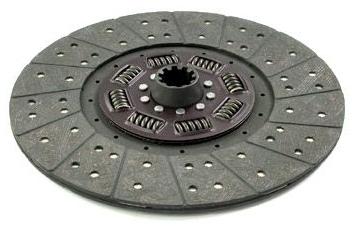
The procedure for replacing clutch assemblies:
- The clutch assembly is being dismantled.
- The friction surfaces of the flywheel, clutch discs are inspected, attention is paid to traces of wear, scratches.
- If wear is detected, the units are replaced: flywheel, engagement discs.
- The clutch is installed. The pressure plate must be installed on the flywheel, secured with bolts; to the pressure driven disc refers to its protruding part.
- When correct installation the clutch should rotate freely. All necessary parts must be lubricated.
Clutch - a mechanism, a transmission component, the operation of which is based on the action of the sliding friction force ( friction clutch); designed to transmit torque.
The main purpose of the clutch is to connect or disconnect the motor connection internal combustion with gearbox. The invention of the clutch is credited Karl Benz.
The clutch serves to temporarily release crankshaft engine with the power transmission of the car, which is necessary when shifting gears in the gearbox and when braking the car until it stops completely. In addition, the clutch makes it possible to move the car smoothly (without jerking) from a place.
General information
There are many different types clutch, but most are based on one or more friction discs tightly compressed against each other or with the flywheel springs. The friction material is very similar to that used in brake pads and used to almost always contain asbestos, more recently non-asbestos materials have been used. The smoothness of switching on and off the transmission is ensured by the slipping of a constantly rotating drive disk attached to crankshaft engine, relative to the driven disk, connected through the spline with the gearbox.
The force from the clutch pedal is transmitted to the mechanism by mechanical (lever or cable) or hydraulic drive.
Pressing the clutch pedal (squeezing, disengaging) spreads the clutch discs, eventually leaving free space between them, and releasing the pedal (engaging) leads to a tight compression of the driving and driven discs.
The clutch disc consists of a disc itself with spring plates, to which two friction linings are riveted or glued independently of each other. This fastening of the pads ensures their divergence when the clutch is disengaged, when the spring plates are gradually compressed when turned on, ensuring smooth engagement. The central part of the clutch disc - the hub - has a splined connection and moves along the input shaft of the gearbox. The hub is movably connected to the disk through damping springs and friction washers of the torsional vibration damper (visible in the picture), which serve to equalize the torque fluctuations that inevitably arise under the influence of variable loads and mass inertia when it is transferred from the engine to the drive wheels and vice versa. Under some conditions, these vibrations can lead to shaft breakage.
Clutch types
- According to the control method - clutches with mechanical, hydraulic, electric or combined drive (for example, hydromechanical).
- By the type of friction - on dry (friction linings work in an air environment) and working in an oil bath ("wet").
- By switching mode - permanently closed and non-permanently closed.
- By the number of driven disks - single-disk and multi-disk;
- By the type and location of the pressure springs - with the location of several cylindrical springs along the periphery of the pressure plate and with a central diaphragm spring.
Clutch device
- flywheel;
- adjustments made of friction material (ferodo);
- clutch disc;
- springs that press the drive disc to the flywheel;
- clutch release fork;
- push clutch;
- clutch pedal shaft;
- clutch pedal;
- leading (pressure) disc;
- engaging lever (or release lever);
- release (thrust) bearing;
- driving (primary) shaft of the gearbox.
How the clutch works
- At the first stage of work on engaging the clutch - we release the pedal, that is, we give the springs of the pressure disk the opportunity to bring the driven disk to the flywheel until they lightly touch. Due to the frictional forces, the disk, slipping for some time relative to the flywheel, will also begin to rotate, and your car will slowly creep.
- In the second stage - we hold the driven disc from any movement, that is, hold the clutch pedal in the middle position for two to three seconds so that the rotational speed of the flywheel and the disc are equal. At the same time, the machine slightly increases its speed.
- In the third stage- the flywheel, together with the pressure and driven discs, already rotate together without slipping and at the same speed, 100% transmitting torque to the gearbox and then to the drive wheels of the car. This corresponds to the state of the clutch mechanism - on, the car is moving. Now all that remains is to fully release the clutch pedal and remove your foot from it.
- To disengage the clutch the driver presses the pedal, while the pressure plate moves away from the flywheel and releases the driven plate, interrupting the transmission of torque from the engine to the gearbox. Press the clutch pedal with a fairly quick, but not abrupt, calm movement until the end of the pedal travel.
Most often, the clutch pressure plate is cast from high quality gray cast iron. The side of such a part with which it is pressed against the clutch disc must be sanded. On the second side (so that the pressure springs can be correctly centered) there are 16 bosses. The slots used to install the arms are also on the boss side.
The driven element has glued overlays on both sides. Also, during assembly, special slots are made in it in order to increase its elasticity. In addition, the clutch drive plate is equipped with a damper, which dampens torsional vibrations.
This is done in order to reduce the oscillation frequency and dynamic loads that appear in the transmission. Also installed are 8 tangential springs, which are the driven element of the damper. In this case, it is calculated that, together with 2 support plates, the springs can be placed in special rectangular windows, which are made precisely for this.
The vibration damper, which is an indispensable part of the clutch, has its own friction element, which is a disc clutch. Strictly speaking, the friction pair consists of friction linings and elastic elements, of which there are several in the mechanism.
These pairs are installed in order to absorb the low frequency vibrations that occur in the power train. The damper springs in the clutch plate are designed to absorb high-frequency torsional vibrations.
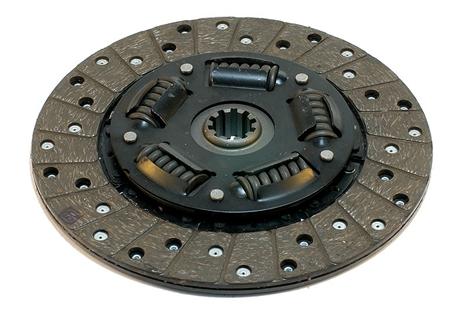
It is worth noting that the connection between the driven part and the hub is not rigid, as the hub can rotate a certain angle in both directions. The maximum value of the angle of rotation is determined only in accordance with those indicators that are obtained when the spring is compressed. In addition, the hub also has a good splined connection mounted on the splined end of the gearbox shaft. The assembled clutch disc can only be statically balanced, and special balancing plates can be fitted to maximize performance. It should be noted that the allowable balance should not exceed 25 gcm.
Sometimes you may need maintenance parts, which consists in a very important adjustment of the drive or mechanism. Most often for replacing the clutch disc or any other repair work this mechanism, you will need to remove it from the engine. In order to do this, it is necessary to initially screw 4 tie bolts all the way into the pressure element (more precisely, into the holes of the pressure springs).
After this manipulation, it will be necessary to unscrew the tie bolts, which serve as fasteners, to the flywheel. When the time comes to install the device back on the engine, you will need to retighten the flywheel mounting bolts, and then unscrew the tightening bolts from the pressure piece.
When installing the clutch discs, it is very important to ensure that they are correctly concentrated. This can be done with a mandrel, which can perfectly serve input shaft... It is important that when the transmission is connected to the engine, the safety of the driven elements is ensured. Under no circumstances should they be loaded during removal / installation.
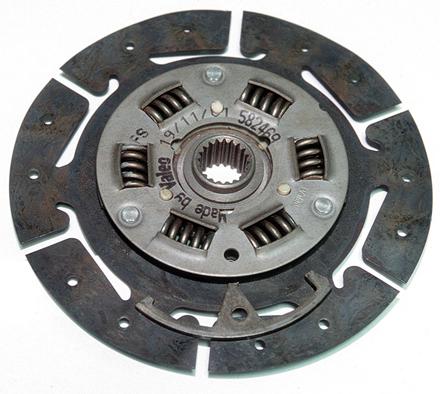
If it is necessary to replace only individual parts of this mechanism, then immediately before installation, it is imperative to check in what position the thrust ring of the levers is. In order to do this, you need to install the tension piece together with the tension bolts and the casing on the prepared stand.
In fact, there may be many reasons why it may be necessary not only to rebuild the clutch disc, but also to replace it completely.
For example, there may be such malfunctions:
- Incomplete shutdown or inclusion of the mechanism. This situation may arise due to the presence of a small (or large) gap between the thrust washer and the coupling bearing, which must be eliminated.
- Too sharp switching on of the device, accompanied by jerks during the start of movement. Such problems occur in the case when the clutch sticks a little on the bearing cap of the input shaft.
Of course, in order to provide a sufficiently reliable and correct work your car, you must follow all the rules for its operation. Nevertheless, from time to time, even with excellent and careful operation, it may be necessary to repair or replace some parts. If your car needed any part, then you can definitely find it on our website.

